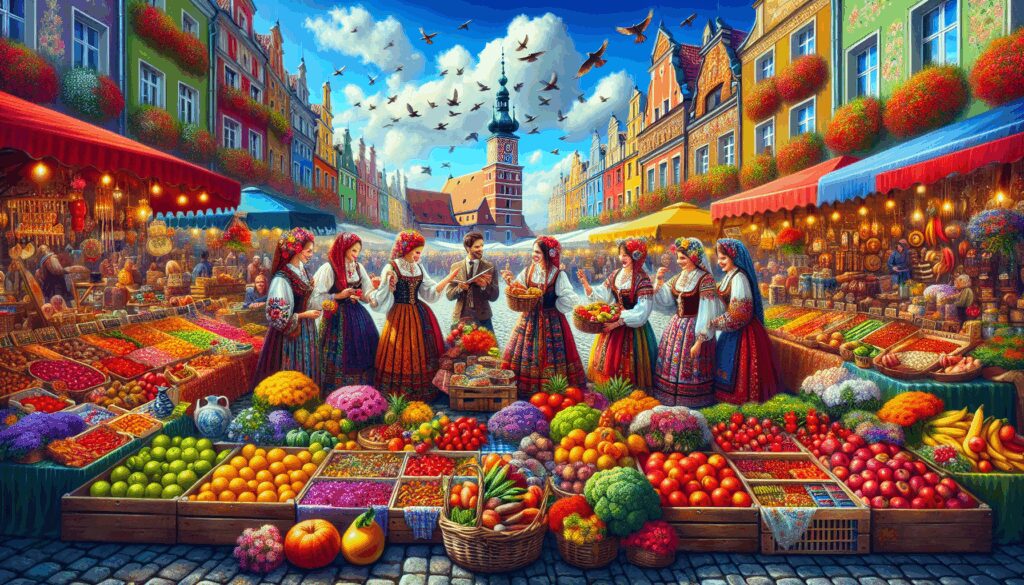Colors, appearance & attributes in Polish

Colors, Appearance & Attributes in Polish
Embarking on the journey of learning a new language is always an adventure, especially when it comes to understanding the rich palette of expressions and terms. Polish language learners, in particular, will find a vibrant world of colors, appearance descriptors, and attributes that are essential for daily communication.
Whether you're planning to visit Poland, interested in its culture, or simply eager to expand your linguistic skills, mastering the basic colors in Polish and how to describe people and objects is a step toward fluency. Let's delve into the colorful vocabulary and descriptive adjectives that make up the Polish language.
What Are the Basic Colors in Polish Language?
Learning the basic colors is fundamental when understanding a new language. In Polish, colors are not just simple words; they carry meanings and can change endings depending on the context and gender. Here are a few primary colors:
- Czerwony – Red
- Niebieski – Blue
- Zielony – Green
- Żółty – Yellow
- Czarny – Black
- Biały – White
These color terms are just the beginning of the Polish colors vocabulary for beginners, creating a foundation for more advanced descriptions.

How Do You Say “Red” in Polish?
In Polish, “red” is said as "czerwony". This color can be associated with passion and is prominent in Polish folklore and tradition. Pronunciation varies slightly between dialects, but the emphasis is usually on the first syllable. Remember that adjectives in Polish agree with the gender of the noun they describe, so "czerwony" might change to "czerwona" or "czerwone" depending on the case.
What Is the Polish Word for “Blue”?
The Polish word for "blue" is "niebieski". It’s reminiscent of the clear sky or the deep sea, and is a color deeply rooted in Polish culture. Just like "red," the form of "blue" changes based on the noun it's describing, reflecting the intricacies of Polish language basics.
How Do You Pronounce “Zielony” in Polish?
The word “zielony” (green) is pronounced roughly as "zheh-LOH-nee". The "zi" creates a soft "zheh" sound, while the "ny" at the end is soft, akin to the Spanish "ñ". This pronunciation can be tricky for beginners, but it's a common color in nature, making it a useful term in everyday Polish vocabulary.
What Is the Difference Between “Jasny” and “Ciemny” in Polish Color Vocabulary?
In Polish, "jasny" means light, and "ciemny" means dark. These terms are often used in conjunction with colors to describe shades and tones. For example, "jasny niebieski" would be light blue, whereas "ciemny niebieski" would be a darker shade of blue. Understanding these descriptors is pivotal for descriptive adjectives in Polish.

What Are the Descriptive Adjectives Related to Appearance in Polish?
Descriptive adjectives are integral for painting a vivid picture of someone or something's appearance. In Polish, there's a rich set of adjectives to describe physical traits:
- Młody – Young
- Stary – Old
- Wysoki – Tall
- Niski – Short
- Piękny – Beautiful
These adjectives, like color terms, also change according to gender and case, showcasing the nuanced nature of everyday Polish phrases for colors and appearance.
How to Express Size and Beauty in Polish?
When discussing size, you might use terms such as "duży" for large or "mały" for small. Beauty, on the other hand, can be expressed with words like "piękny" for beautiful or "ładny" for pretty. Both size and beauty are subjective attributes, so they lend themselves to a variety of expressions and comparisons in conversational Polish.
Learning to effectively communicate about size and beauty requires understanding contextual nuances. For example, "Ona jest piękna" means "She is beautiful," while "To jest duży dom" translates to "This is a large house." These phrases are part of learn Polish colors and attributes that enhance descriptive communication.

Before continuing with related questions, let's take a moment to watch an informative video on Polish colors to aid our visual learning:
Related Questions on Polish Colors and Appearance
What Are the Colors of the Polish Culture?
Colors within Polish culture are symbolic and meaningful. For instance, white ("biały") and red ("czerwony") are seen on the national flag, representing concepts like purity and courage. During cultural events and holidays, various colors are used to signify traditions and beliefs.
What Are the Colors in Polish Language?
The Polish language includes a spectrum of colors, each with its unique pronunciation and application. From the primary colors to more specific shades like "szary" (gray) or "pomarańczowy" (orange), Polish colors are integral for daily communication and cultural expression.

What Are the Polish Colors?
Polish colors encompass a broad range, including the basics discussed earlier. In addition, there are more nuanced shades and tints, which are essential for detailed descriptions. Learning these colors contributes to a richer understanding of the Polish language color pronunciation guide.
What Is Polish for Blue?
As mentioned, the word for blue in Polish is "niebieski." This color is just one of the many hues you can learn to describe the world around you with accuracy and cultural awareness, tapping into the heart of colors in Polish culture.

Leave a Reply